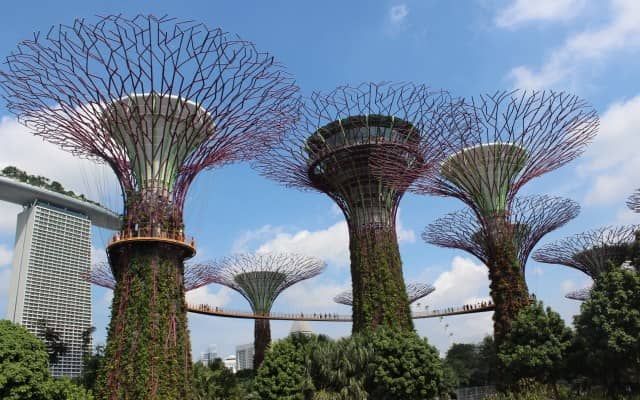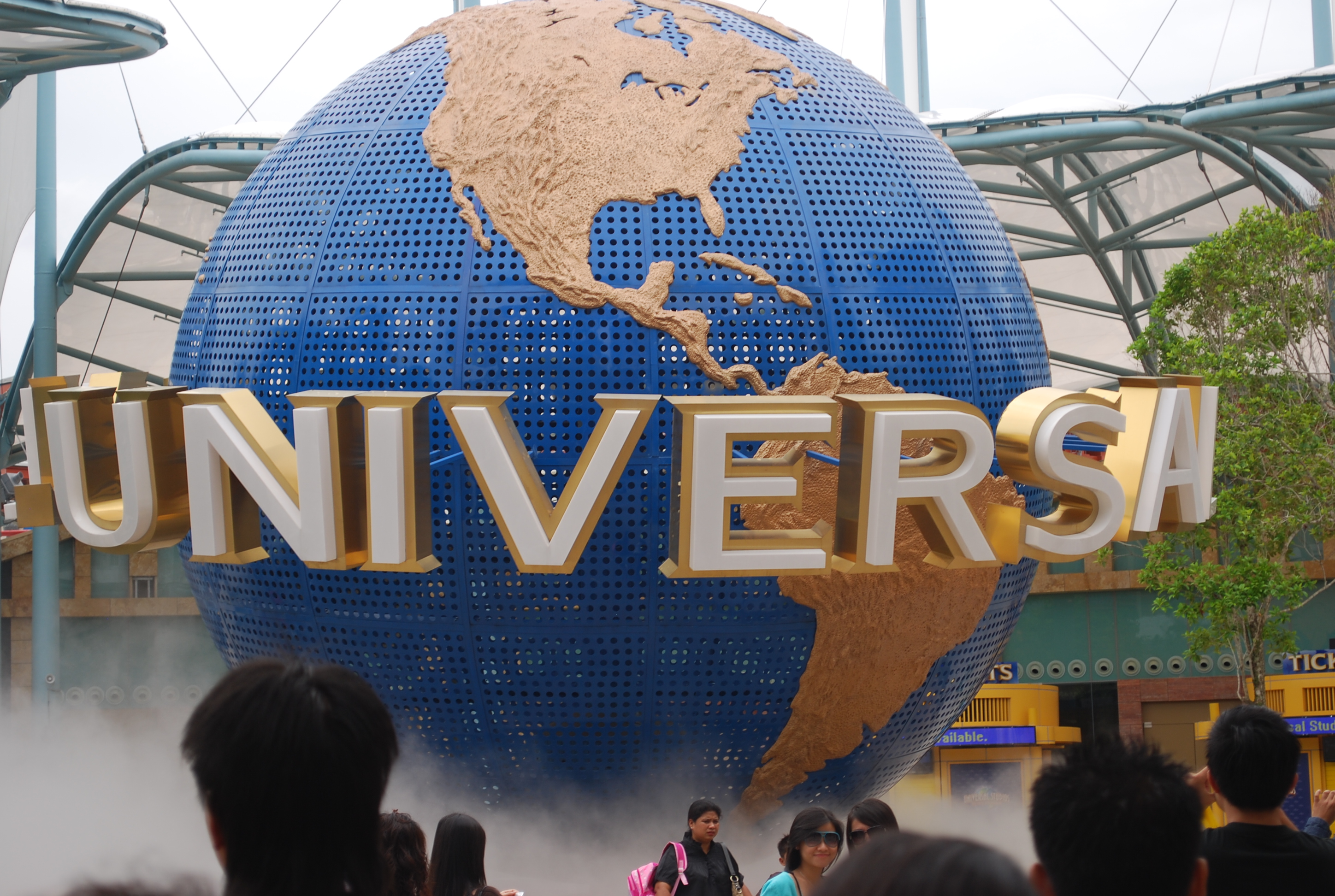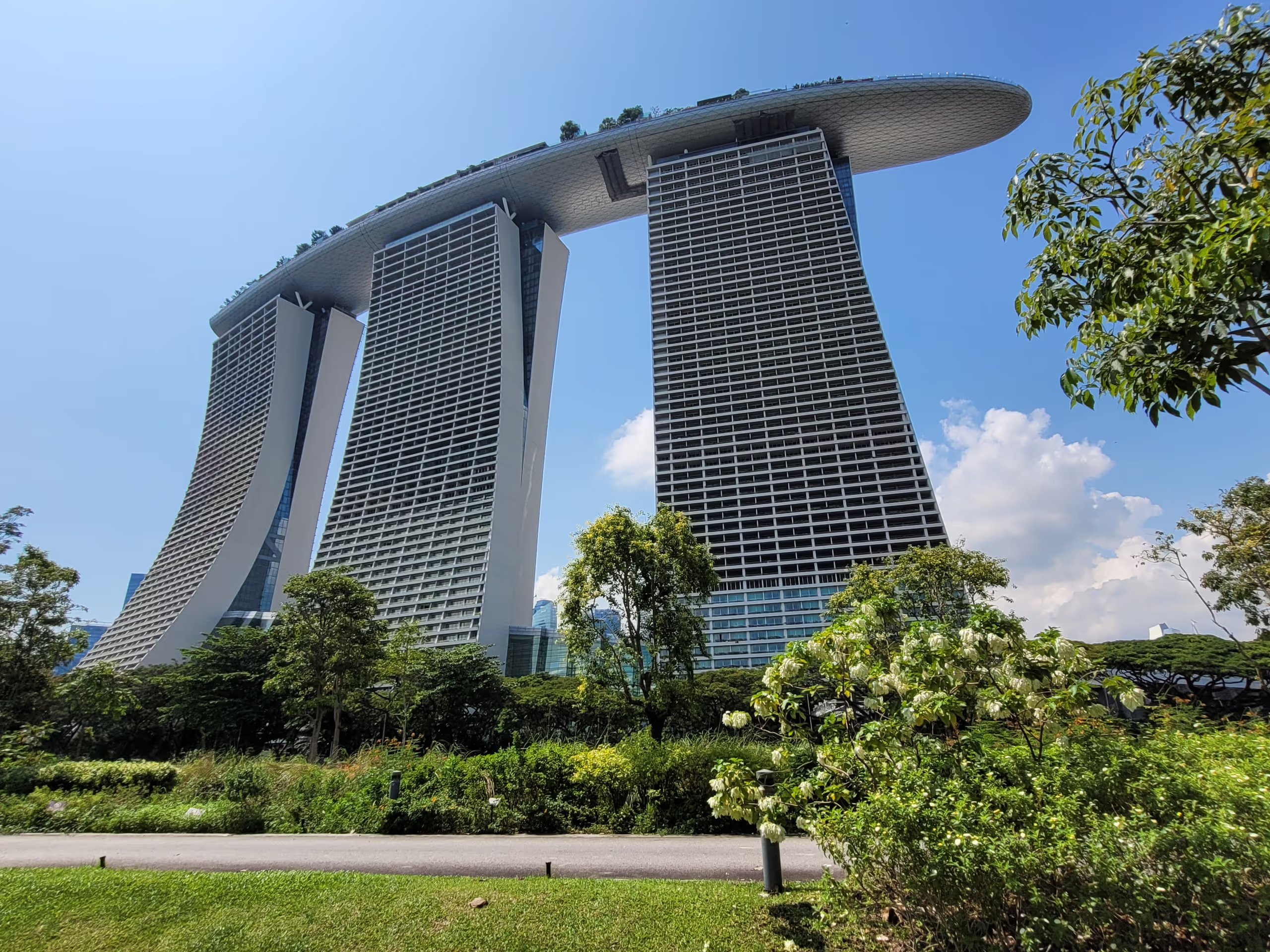“Lion City” – ‘Isle at the end of the peninsula’ – By Arundathie Abeysinghe – Part IV
Image Source : 7continents1passport.
 Sentosa Island
Sentosa Island
Globally renowned Sentosa Island is Asia’s leading leisure destination and Singapore’s premier island resort getaway, a vibrant island resort for business and leisure. Located within 15 minutes from the central business and shopping districts, the island resort is situated off Singapore’s southern coast, connected to the city by road, cable car, pedestrian boardwalk as well as monorail. 500-hectare island resort is home to an exciting array of themed attractions including golden sandy beaches, resort accommodations, world-renowned golf courses, lush rainforests, a deep-water yachting marina and luxurious residences.
Sentosa is also home to Singapore’s first integrated resort, Resorts World Sentosa that operates Southeast Asia’s first Universal Studios theme park.
Situated on the eastern end of Sentosa Island is Sentosa Cove, an exclusive waterfront residential enclave bustling with more than 2,000 homes, quayside restaurants, retail and specialty shops. The island is also home to Sentosa Golf Club and its two acclaimed golf courses, The Serapong and The Tanjong which has hosted several high-profile professional and amateur tournaments, welcoming international star players and world-class golf professionals from across the world.
Universal Studios Singapore
A gigantic theme park packed with activities, rides and shows, sparkling wonders of the silver screen comes to vibrant life at Universal Studios Singapore, the first-ever Hollywood movie theme park in Southeast Asia. With interactive shows, adrenaline-pumping rides and a range of thrilling attractions based on the blockbuster movies and television series, Universal Studios Singapore is located within the Resorts World Sentosa. It features 28 rides, shows and attractions in seven themed zones and is one of the five Universal Studios theme parks around the world.
SEA Aquarium
With over 100,000 underwater animals from approximately 1,000 species, including leopard sharks, goliath groupers and squadrons of manta rays, the SEA Aquarium within Resorts World™ Sentosa is a magical marine world, a gigantic aquarium which makes a visitor feel as if he/she is on the cavernous ocean floor. The multitude of marine life at the Aquarium are grouped according to 10 different zones with over 50 habitats; from the Bay of Bengal, the Straits of Malacca & Andaman Sea and the Great Lakes of East Africa, the underwater community in coral reefs and cool marine life in the cold-water habitats. In addition, for an exciting observation of majestic apex predators, stroll over to the Shark Seas Habitat comprising over 200 of these predators including endangered species such as the scalloped hammerhead shark and the aggressive silvertip shark.
Iconic landmarks
Marina Bay Sands
The three-pronged, 55-story-high Singapore landmark with 360-degree views combines ultra-luxury hotel accommodation, several designer shops, upscale restaurants and bars, a casino, theater, nightclub, and the cutting-edge on-site ArtScience Museum. Sands SkyPark that links the top of three towers and the Observation Deck on the 57th floor that is open to visitors.
Image Source : boardingticket
ArtScience Museum
Opened in 2011 and one of Singapore’s well-known cultural landmarks, the lotus-inspired ArtScience Museum was designed by world-renowned architect Moshe Safdie. It has hosted exhibitions by renowned artists such as Leonardo da Vinci, Vincent Van Gogh and Andy Warhol including ground-breaking science, technology and digital exhibits. Covering nearly 65,000 square feet in the Marina Bay area and reaching over 60 meters (197 feet) high, this distinctive building has 10 “fingers” (each finger housing a different gallery space or hall) that are anchored in a round, central base.
Helix Bridge
Designed and engineered by a team of leading architects from Singapore and Australia, the Helix Bridge is one of Singapore’s most intriguing modern landmarks with distinctive double-helix structure based on the structure of human DNA and said to symbolize “life and continuity, renewal and growth.” Architects are of the view that there is no similar structure in the world. The 920-foot-long (approximately 280 meters) bridge spans the Singapore River and links landmark attractions such as the Singapore Flyer and Esplanade Theatre on one side to the Marina Bay Sands and ArtScience Museum on the other.
Singapore Flyer
Located in Marina Bay and situated 541 feet (approximately 165 meters) above the ground, Singapore Flyer is the biggest in Asia. The Flyer commenced operations on February 14, 2008. It has 28 air-conditioned glass capsules that each accommodate 28 passengers and “flights” and offers spectacular views including a bird’s eye view of the entire city and its surroundings, stretching as far afield as Sentosa Island.
Esplanade – Theatres on the Bay
Set on two glass domes and one of Singapore’s well-known architectural landmarks, Esplanade is Singapore’s national performing arts center. Esplanade’s spiky exterior is made up of some 7,000 triangular aluminium sunshades. Inside, the complex houses a 2,000-seat theater, a 1,600-seat concert hall, a recital studio, a theater studio, including an outdoor theater and visual art exhibition spaces with cafés, restaurants and shops.
Image Source : vakantio
Merlion Park
The eye-catching Merlion Sculpture on the Merlion Park waterfront is one of Singapore’s well-known landmarks. With its lion’s head representing Singapore’s original name (“Singapura”) which means “lion city”, while its fish tail symbolizes Singapore’s early history as a fishing village. Tourists throng Merlion Park waterfront for photo opportunities with the mighty Merlion and for bird’s-eye views of Marina Bay and one of the best globally-renowned skylines.
Singapore Botanic Gardens
As the only tropical botanic garden on the World Heritage list, Singapore Botanic Gardens is one of the well-known landmarks in Singapore. Sixty acres of former plantation land were established as the Singapore Botanic Gardens in 1859 and in 2015. The Gardens became the country’s first UNESCO World Heritage Site. There are four distinct “Core” areas housing thousands of plant varieties; 1,000 orchid species and 2,000 hybrids that are displayed in a series of cool houses and an orchidarium. including rare orchids and ancient trees, waterfalls, lakes, fountains, a “learning forest” and the imaginatively designed Jacob Ballas Children’s Garden.
National Museum of Singapore
One of Singapore’s famous historic landmarks and the country’s oldest museum, the magnificent, 19th-century colonial building utilizes cutting-edge multimedia technology to describe the story of Singapore from its foundation in the 14th century to the present day. Founded in 1849, when its initial collections were housed in the Raffles Library and Museum, since 1887, the Museum has been located on Stamford Road. In early 2000s, the original domed neoclassical building was extended with an elegant glass rotunda and passageway.
Clarke Quay
One of three quays (Clarke, Robertson, and Boat) on the Singapore River which were significant trading hubs in the 19th century, goods were transported from Asia and stored in warehouses (“godowns”) lining the quays, that were in constant use until the 1970s. The quays offer plenty of photo opportunities. They are a reminder of Singapore’s glories as a premier global hub port and international maritime center.
Other attractions
Bugis Street
Bugis Street (comprising former Bugis Village and Bugis Street) is one of the largest street-shopping locations in Singapore, with approximately 400 shops. Located within the heart of Singapore’s Civic and Cultural District Bugis Street is a vibrant lifestyle destination packed with endless food offerings, affordable luxuries, and set in the heart of the culture rich Bugis precinct. This mall houses leading global chain of stores and small pushcart stalls selling interesting souvenirs and offers the city’s first sky lit shopping experience.
Little India
At present, Little India is one of Singapore’s most vibrant districts, with a fascinating past that dates to the 19th century. One of the major attractions in Little India is the fifteen-meter-tall Buddha Statue in the ‘Temple of a Thousand Lights’.
Lau Pa Sat
Since its opening as a fish market in 1894, replacing the original 1820s waterfront market, this vibrant hawker center has been a landmark in Singapore. During the past several years, it has undergone several makeovers, yet, it remains as it was designed by George Coleman, the architect of many elegant colonial buildings in Singapore. In 1973, it was given official national monument status. The area at the front is transformed into “Satay Street”, an outdoor restaurant each evening at 7.00 p.m. attracting thousands of office workers and tourists.
Chinatown
With its maze of narrow roads including Chinatown Food Street, souvenir shops and indie boutiques dotting the area, with clothes, crafts and antiques, this vibrant district is currently where tradition and modernity blend, impeccably. Ornate Buddha Tooth Relic Temple and Museum and Sri Mariamman Temple are cultural and religious institutions in Chinatown.










